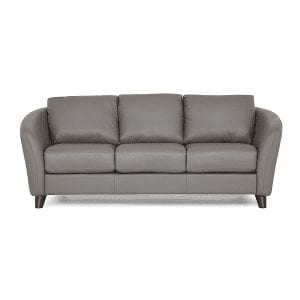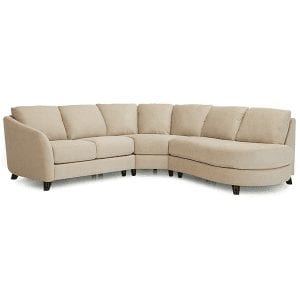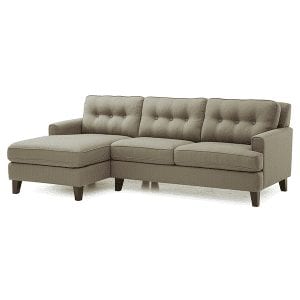Furnishing a home is an exciting way to show off one’s personal style and bring much-needed functionality to our lives.
But if you’re new to buying furniture – or if it’s been a while since your last purchase – you may not be sure where to start. With so many designs available, perhaps the biggest challenge is sorting through your options to find the perfect pieces for your home.
As with most things in life, it helps to be prepared!
Whether you need all new home furnishings or just a few items to spruce up your decor, here are some things to do before you visit our showroom. By following these 7 steps, you’ll be ready to shop with confidence!
#1: Get Inspired
Not sure what you want?
No problem!
There are many places to find quality images to get a sense of what appeals to you.
Browse home decorating websites online or flip through a few design magazines. Create an image board on Pinterest or cut out pictures of your favorite furnishings to save in a folder.
And don’t be shy about asking family and friends about the lovely furnishings in their homes. They’ll appreciate the complement and may offer hints that will help you on your own shopping journey!
#2: Match Style & Lifestyle
If you’re like most people, you want the best of both worlds – fabulous furniture that’s beautiful to look at and tough enough to handle the rigors of daily life.
As you’re gathering ideas, pay attention to what appeals to you most. Are you drawn to the nostalgia of traditional design, or does a contemporary vibe speak to your heart? Do you prefer the cozy feel of stuffed upholstery or the clean lines of modern designs?
When it comes to functionality, think about how you plan to use your furniture. If you do a lot of entertaining, look for something that’ll impress your guests. If you’ve got kids or pets, you’ll need durable fabrics that’ll stand up to stains and scratches. And it’s not unreasonable to expect both.
Consider how long you plan to keep your furniture. Well-crafted home furnishings built with quality materials may cost a little more up front but end up saving money in the long run thanks to their durability.
#3: Find Your Favorite Colors
From cool pastels to bright, saturated hues, your choice of color sets the tone for the whole room.
Think about the mood you’d like to create, then shop for colors and patterns that evoke that style. For example, graceful florals are perfect for a formal living room, while earth tones lend a casual, intimate feel to the den.
Another good strategy is to choose a neutral tone, such as white, beige or cream, for dominant items like the sofa. Then liven up your space with a few colorful throw pillows or accent chairs.
#4: Set Some Priorities
Furnishing an entire home can seem like a daunting task. As with any big job, it helps to break it down into smaller steps.
If you’re leery of buying everything at once, or if you’re on a limited budget, start with the necessities. These include a bed for sleeping, a table and chairs for dining and a couch for relaxing and watching TV. Once you have the basics in place, you can fill out your decor with complementary pieces over time.
Another good rule of thumb is to furnish high-traffic areas of your home first – such as your master bedroom, living room and dining nook. If you’re not expecting overnight guests for a while, it’s probably okay to save the guest bedroom, and other lesser-used areas, for later.
#5: Take Measurements
The last thing you want is to fall in love with a beautiful new sofa only to find that it doesn’t fit in your living room!
A quality tape measure is your best friend when choosing furniture. Don’t just eyeball it – take the time to measure the dimensions and ceiling height of your room. Be sure to measure your doorways and hallways to make sure your furniture will fit through. Use painters tape to mark the approximate locations where your new furniture will go.
You can further plan your layout by taking photos, creating hand-drawn sketches or using room planning software. Bring these images, along with your tape measure, to our showroom to assist in choosing your new furnishings.
#6: Blend Old & New
Still in love with grandma’s antique coffee table? Want to hang on to that bookshelf you bought years ago?
More and more homeowners are discovering the joy of combining old and new furniture. First, there’s no need to toss a fully functional item just because it may have earned a few “character marks” along the way. Second, adding new furnishings is an excellent way to freshen up the look and feel of more dated pieces.
Taking stock of what you already have will help you plan your purchases wisely. Look for quality new furnishings in a similar style, or in complementary colors, to add new life to your space.
#7: Set a Budget
The cost to furnish an entire home can range from as little as $3,500 to as much as $95,000 or higher, depending on how much you buy and which brands you choose.
The good news is that with a little planning, you can find quality furniture that meets your needs and fits your budget. Research price ranges for individual items you’re considering to get a sense of how much you can expect to spend.
One helpful hint is to adopt a “splurge and save” strategy. Choose one big ticket item, such as a well-crafted, durable sofa, to be the showpiece of the room. Then fill out the remaining space with complementary pieces with a lower price tag.
And as we mentioned above, it’s okay to buy home furnishings a little at a time. Not only does this let you space out your purchases, it also allows your personal taste to evolve over time. You may get a keener sense of what appeals to you as you become a more experienced shopper!
At Lifestyles Furniture, our design experts will help you navigate our showroom to find the best home furnishings to fit your life and style. Most of our merchandise is customizable to help you get the exact look you want.
Reach out to us online or drop by our showroom today!



